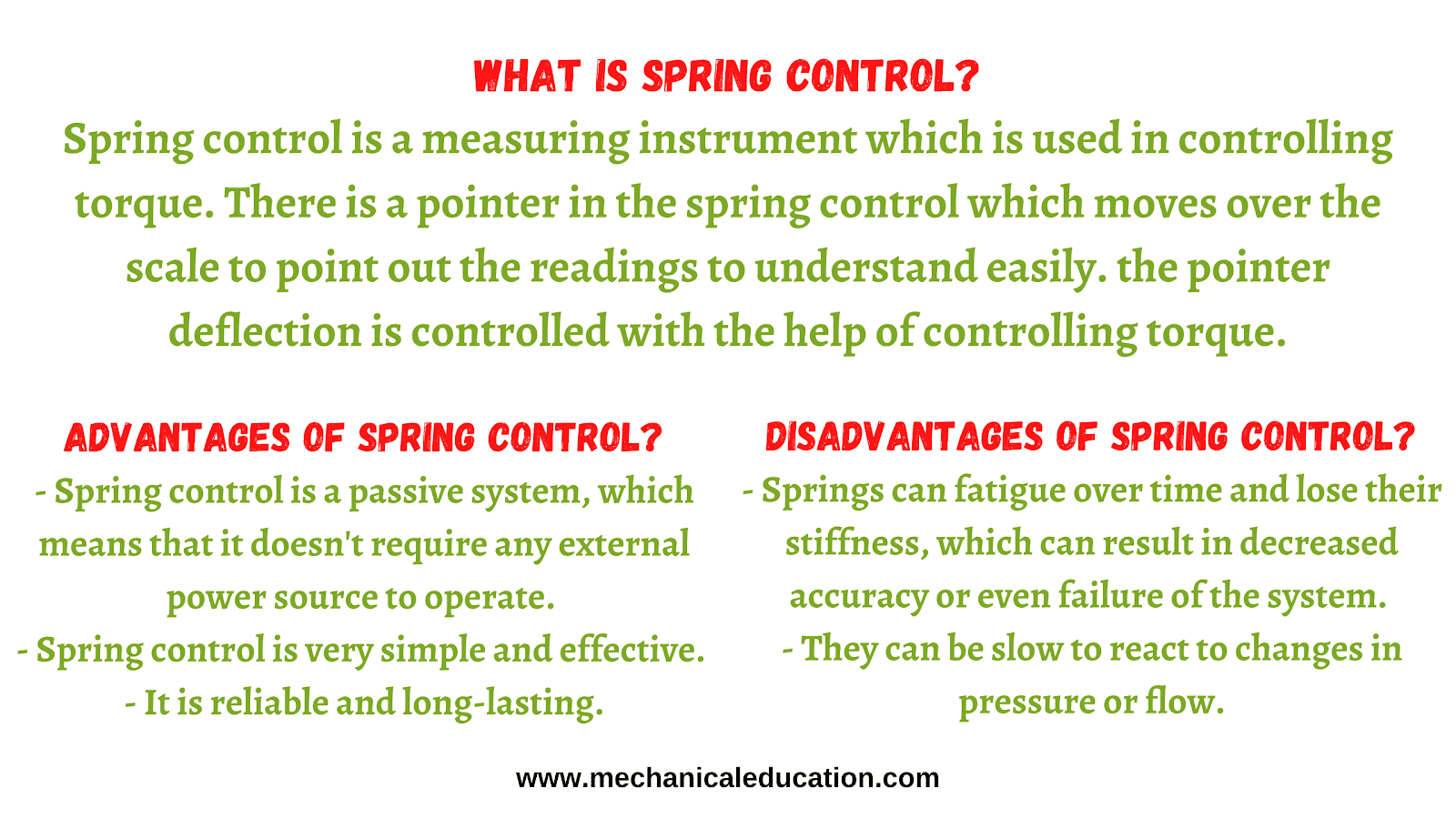Spring Control – Advantages and Disadvantages
what is Spring Control?
Spring control is a measuring instrument which is used in controlling torque. There is a pointer in the spring control which moves over the scale to point out the readings to understand easily. the pointer deflection is controlled with the help of controlling torque.
Advantages of Spring Control:
- Spring control is a passive system, which means that it doesn’t require any external power source to operate.
- Spring control is very simple and effective.
- It is reliable and long-lasting.
- Spring control is relatively simple and inexpensive to build and maintain.
- In this system, the position of spring control can be held in any position like vertical or horizontal.
- Due to there is a directly proportional in between deflection angle and current flow in spring control system the scale shown is uniform.
- Spring control can be used to achieve very precise movements and positioning.
- They are easy to install and use.
- They are typically less expensive than other types of controllers.
Disadvantage of Spring Control:
- Springs can fatigue over time and lose their stiffness, which can result in decreased accuracy or even failure of the system.
- Springs can be affected by environmental factors such as temperature fluctuations or humidity changes, which can also lead to decreased accuracy or failure of the system.
- They can be slow to react to changes in pressure or flow.
- They can be affected by changes in temperature.



